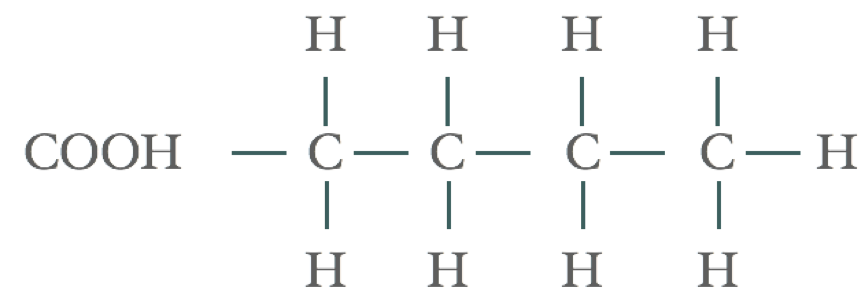Saturated fats
There has been a mass of misinformation over the last half-century or so concerning which fats are 'good' and which 'bad' for our health, so much so that even government websites still get it wrong.
A saturated fat is one where all the carbon (c) backbone have been saturated with hydrogen.
The single bonds between the carbons mean that the bonds are strong. This in practice means that the fat is ‘stiffer’ or more solid at room temperature. These strong bonds, that are not easily broken also mean that sunlight and heat do not easily damage the oil. This means that they don’t go rancid as easily as say, vegetable or seed oils, and they can be used to fry food. The weaker bonds in unsaturated fats mean they are not suitable for frying.

Breast milk is 50% saturated fat. Palm oil is 50% saturated fat. Saturated fat is needed for cell membranes and the myelin sheaths surrounding nerve cells. Fat soluble vitamins A, D, E and K are found in fatty foods and need fat to be absorbed. Most people know that bones need vitamin D, but did you know that vitamin D needs the help of all the other fat soluble vitamins to do its job properly.
Saturated fat myth
The ‘saturated fat is bad for you’ myth came about in the 1950s after epidemiologist Ancel Keys (not a doctor or nutritional expert) published a study (the seven countries study) supposedly showing a relationship between saturated fat intake and cardiovascular disease (CVD) i.e. heart attacks and strokes. Before that time heart attacks were relatively uncommon. Further analysis of Ancel Keys' study taking 21 countries and not just the seven that were ‘cherry picked’ by Keys, revealed no such link.
Media and governments however, stuck to the seven countries study. Further studies followed, some of which also showed a link between saturated fat and CVD. It is interesting that few doctors really analyse research. We are often told what to think by national guidelines. If we were to scrutinise in detail some of the papers used we would find out why some papers are misleading.
Some of the main issues are as follows:
- Saturated fat that is refined, bleached and deodorised becomes harmful and inflammatory to the body – using this type of fat in the clinical trial will show a positive relationship between saturated fat and CVD. Many studies do not differentiate the type of saturated fat used.
- Animal fat becomes harmful to human health if the animal is fed grains instead of its natural feed (grass). Studies looking at animal fat consumption and analysing the effect on CVD, without checking what the animal ate, will give misleading results.
- Looking at soft end points like the blood cholesterol level can be misleading. Science still does not really understand cholesterol. Cholesterol has a steroid base. Most steroid and steroid like hormones in the body such as vitamin D3 play an important role in helping the body stay in equilibrium. We know that cholesterol is an antioxidant, a fire fighter that increases in times of inflammation. Newer research also suggests that we have an over-simplistic view of low density lipoprotein (LDL), the so called ‘bad’ cholesterol and high density lipoprotein (HDL), the so called ‘good’ cholesterol. Rather than simply measuring absolute levels of these lipoproteins in the blood, more emphasis is now being placed on the size of particles within HDL and LDL, with small dense particles being ‘bad’ for health and light, fluffy particles being ‘good’ for health. This means that you may have raised LDL (so called ‘bad’ cholesterol) but this may be made up of lots of light and fluffy particles which help you to fight inflammation. Older studies would not have been able to take this new knowledge into consideration. Even newer studies fail to make this distinction.
Good recent studies fail to make a link between ‘good’ saturated fat consumption and cardiovascular diseases. Let’s bring back natural food sources such as butter, cheese and tropical oils.
Saturated fat behaves differently with high and low carbohydrate diets. A high carbohydrate:high saturated fat diet will result in an increase in the ‘ugly fat’ triglyceride (TG). A low carbohydrate and high saturated fat diet will result in lower levels of the ‘ugly fat’ TG.
Conclusion
Saturated fats that come from vegetables or grass fed meat is good for health. Refined carbohydrates are the villain, not saturated fats.
